Tech-Driven Solutions
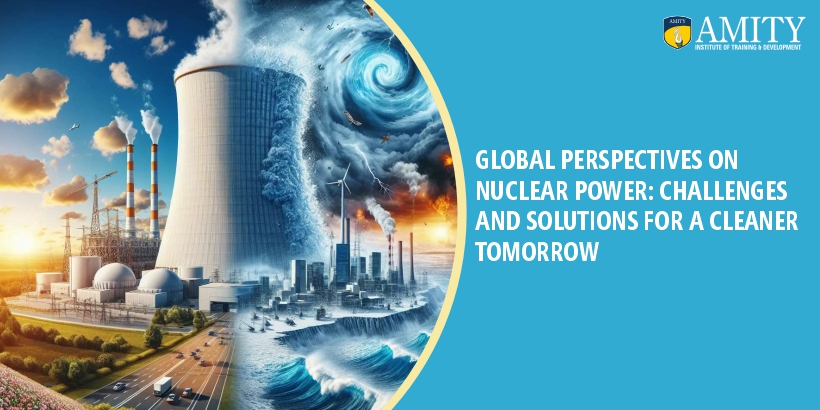
Nuclear power is an important energy source to have a clean future. It is produced by nuclear fission in atomic power plants that use the element uranium as fuel during which the fission process produces tremendous thermal energy that transforms water into steam, forcing turbines to produce electricity.
By 2023, nuclear power supplies approximately 20% of the world’s electricity. Production leaders are countries like the United States, France, and China. The Nuclear Power Corporation in India is now expanding its capacity to sustainably meet increasing energy demands.
Despite the challenges of public perception and economic viability, innovations in nuclear technology can lead to a brighter future. Investing in nuclear energy can significantly reduce carbon emissions and support global climate goals.
It discusses the nuclear power plants in depth, discussing how they work and challenges they are facing, along with possible future solutions for a cleaner environment.
Key Takeaways
- Nuclear power is required to meet low-carbon energy targets.
- The challenge of public perception will be resolved by education.
- AITD offers sufficient specialized training to support the preparation of professionals for employment in the nuclear industry.
- Nuclear energy has a good outlook into the future with an expected increase in capacity worldwide.
The Current Outlook on Nuclear Power: Global Nuclear Power Plant Network Overview
There is a diversity of the nuclear power landscape countries. Leaders among them are the United States, France, and China, with the most nuclear power generation. Others are turning to nuclear for options. The Nuclear Power Corporation of India is key in India’s nuclear strategy.
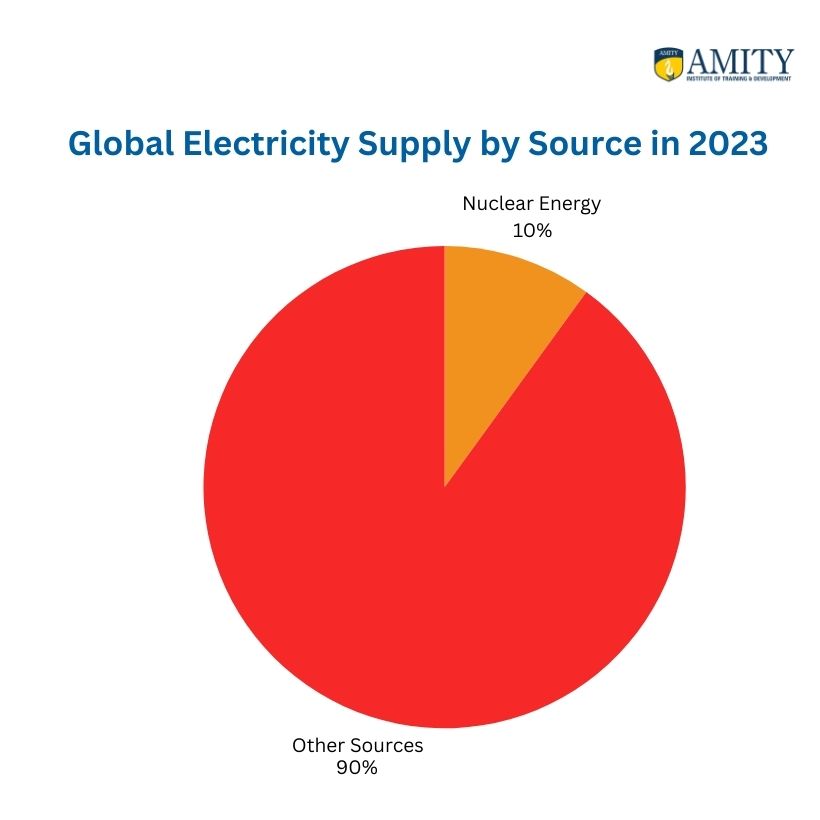
DO YOU KNOW? As of 2023, there are 413 operational nuclear reactors worldwide, contributing to about 10% of the global electricity supply.
World Nuclear Capacity Trends: The Rise of the Nuclear Power Plant
The World Nuclear Industry Status Report 2024 shows that in 2023, the global nuclear electricity generation was at 2602 TWh. This growth shows nuclear power’s importance as a clean energy source. It further says that nuclear reactors avoided about 2.1 billion tonnes of CO2 emissions, showing their role in fighting climate change.
DO YOU KNOW? The international atomic energy agency IAEA projects that global nuclear capacity will increase by 2.5 times by 2050, thanks to Small Modular Reactors (SMRs).
How Does Nuclear Power Compare with Renewable Energy Sources?
Both nuclear power and renewable sources such as wind and solar are necessary in the attempt to reduce carbon emissions, yet they play different roles in the energy mix. The base load of electricity is best provided by nuclear, but renewables can be intermittent, making this integration more resilient.
Major Differences:
- Reliability: Nuclear power is always available, irrespective of weather conditions.
- Carbon Emissions: Both resources have low emissions while in operation. Nuclear power, however, requires much less land than very large solar or wind farms.
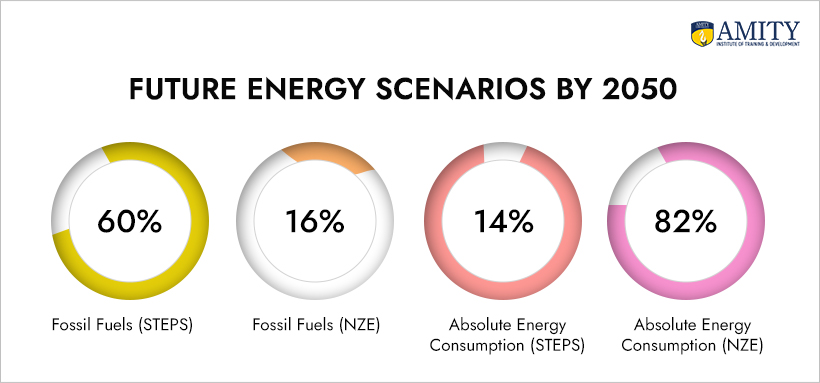
DO YOU KNOW? Nuclear power may supply up to 16% of new electricity demand by 2050, that’s more than 4,300 TWh per year.
What are the Main Challenges Confronted by the Global Nuclear Power Plant Industry?
Despite the benefits of the nuclear industry, it has many challenges:
- Public Perception: Accidents like Chernobyl and Fukushima have created fear about nuclear power stations in the minds of people. That fear can stall new projects and hinder approvals.
- Economic Viability: Building new reactors is extremely costly. That cost scares away investors. Also, renewable energy is gaining popularity, so nuclear power becomes less attractive financially.
- Regulatory Hurdles: This is the process of checking all the rules that might hinder the project and increase its cost. Countries have to strike a balance between keeping things safe and quickly approving new technologies.
- Waste Management: Disposable radioactive waste is another major problem. Storage of such waste for a longer period is also essential to save the environment.
Expanding the Nuclear Power Plant in India: The Way to Sustainability
In this respect, the following solutions have been offered to address the issues mentioned above:
- Technological Innovation: Small Modular Reactors (SMRs) promise an exciting avenue of technological development, as reactor designs may lead to greater safety and decreased cost. The SMRs are much smaller and more versatile than their counterparts and are very promising for many applications.
- Public Participation: Communicating effectively the safety aspects and environmental advantage helps assuage public concerns toward nuclear energy. Communities involved in public discussions over the nuclear projects gain trust.
- Policy Backing: There should be an overall conducive policy from the government so that it favors investment in the nuclear sector, but there would always be strict safety policies and standards. Research and Development incentives might speed up developments within this sector.
- International Cooperation: Potential for best practice sharing between nuclear power countries has further increased safety standards and operational efficiency. Joint research initiatives may also spur technological innovation.
DO YOU KNOW? In 2023, 25 countries signed a declaration at COP28 to triple global nuclear capacity by 2050, marking growing momentum in nuclear energy.
What are the Economic Effects of Expanding Nuclear Power?
Nuclear energy can bring large economic impacts by use of nuclear power generation:
- Employment: Construction and operations in new reactors provide employment.
- Security through Energy Independence: By burning fewer imported fossil fuels, a country is secured
- Long-Term Low Cost of Electricity: Nuclear plants have provided cheap electricity over an extended period of time, if constructed and completed successfully.
However, this cannot come at a huge up-front cost for most nations.
World Nuclear Performance Report indicates significant improvement in nuclear energy. In the year 2023, atomic sources of energy covered about 9 percent of the total global electricity. Concurrently, the nuclear reactors prevented production of 2.1 billion tones of CO2 in that year. Moreover, at COP 28, 25 countries have agreed to build nuclear capacity till 2050, which becomes another decisive move towards green energy.
How Does AITD Help Drive Advancement of Nuclear Power Solutions?
Amity Institute of Training and Development ( AITD) is a Training Institute that provides courses about nuclear energy and the potential that comes with it. AITD is ready and available for more training and resources that the current change of nuclear power generation requires and expects. Did you know?
DO YOU KNOW? AITD has over 50 partners to train across industry lines.
AITD’s Innovative Training Programs for Nuclear Energy Professionals
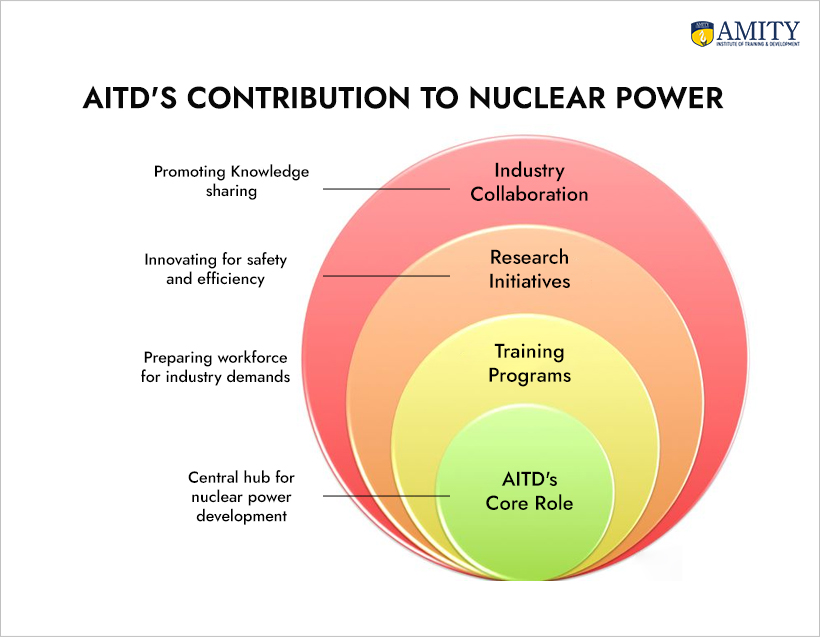
- Training Programs: It conducts specialized courses that target the operation and management of a nuclear power plant, thus ensuring its employees are well-equipped in line with the industry needs.
- Research Initiatives: Deep research in nuclear technologies is carried out by AITD as part of its efforts to present innovative solutions that enhance safety and efficiency in nuclear power generation.
- Cooperation with Industries: AITD collaborates with key industries and conducts workshops and seminars with the nuclear power countries to share knowledge.
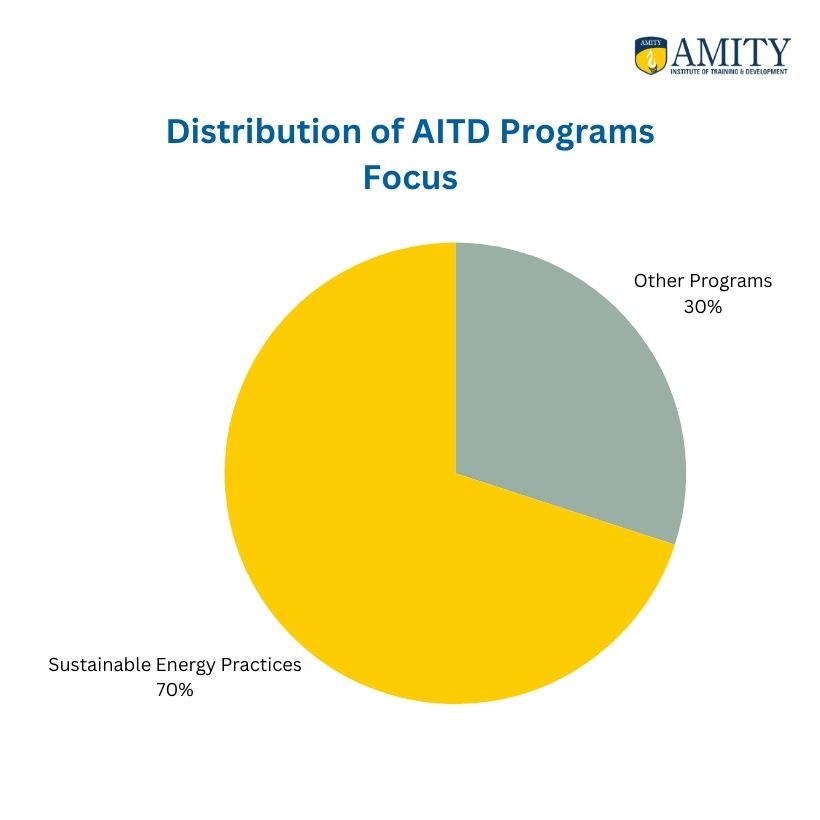
DO YOU KNOW? Sustainable Energy Solutions Focus: 70% of AITD programs are on sustainable energy activities, including nuclear.
Research and Development Commitment of AITD
AITD is not just a training organization but is also actively engaging in research and development endeavors that help advance nuclear technologies. With industry leaders and academics, AITD is constantly involved in creating innovative ideas to make nuclear power plants plant safer and more efficient.
DO YOU KNOW? AITD has collaborations with institutions in more than 10 countries aimed at international knowledge exchange on nuclear energy.
The future of nuclear power with AITD
As we look into a future where clean energy is the be-all, understanding the dynamics behind nuclear power is essential to policymakers, industry leaders, and the public.
Yes, public perception, economic viability, and regulatory hurdles remain huge obstacles to nuclear energy; but, by any metric, expanding nuclear energy offers gigantic potential benefits. With further technological developments and strategic investment in training through bodies such as AITD, we will be prepared to face a sustainable future powered by nuclear technology.







